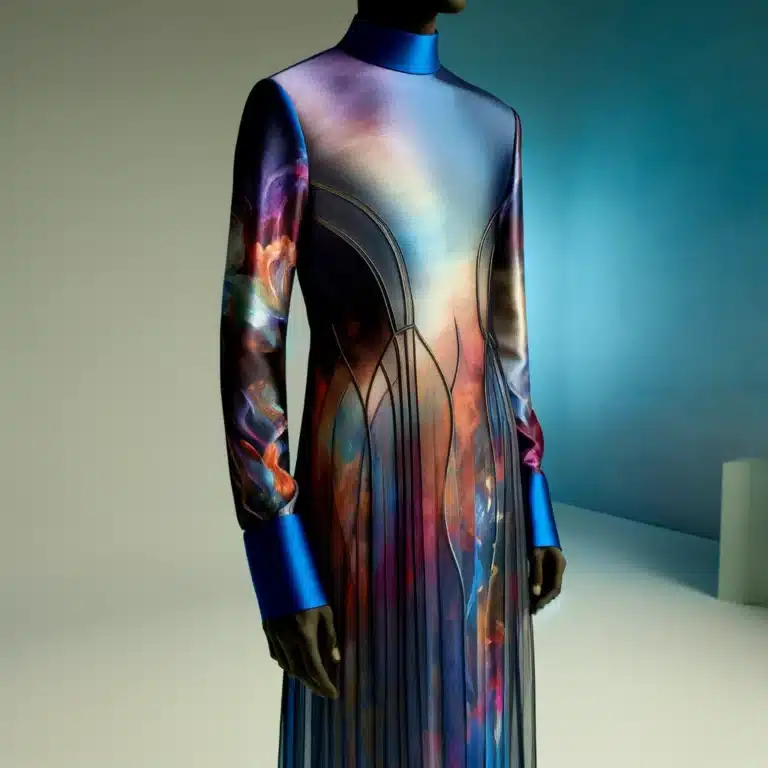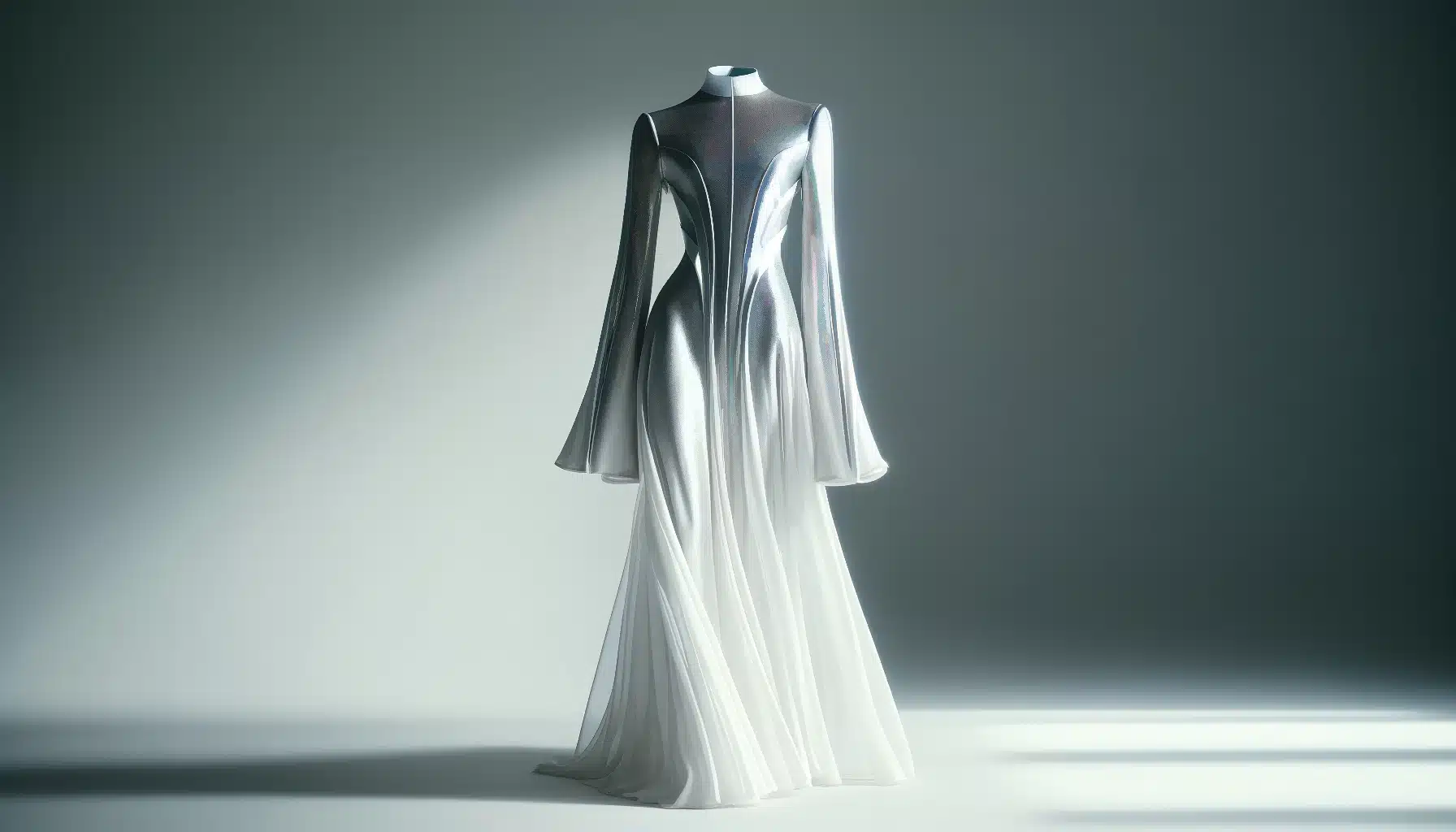The fashion industry, traditionally known for its emphasis on creativity and aesthetics, is undergoing a significant transformation driven by the integration of advanced technologies and Fashion Tech Innovations . From generative AI to 3D prototyping and fit-tech solutions, these innovations are not only enhancing the efficiency of fashion production but also revolutionizing the way consumers experience and interact with fashion. This blog explores key technological trends reshaping the fashion industry and their profound impact on business operations and consumer engagement.
Generative AI in Fashion Design
Generative AI is at the forefront of technological advancements in the fashion industry. This technology uses algorithms to generate new designs based on existing data, offering designers a tool to explore a vast array of creative possibilities. By analyzing patterns, colors, and styles from historical fashion data, generative AI can create unique and innovative designs that might not be possible through traditional methods.
One of the significant advantages of generative AI is its ability to speed up the design process. Designers can input specific parameters and receive a multitude of design variations in a fraction of the time it would take to manually sketch each one. This not only accelerates the development cycle but also allows for more experimentation and creativity. Moreover, generative AI can help predict fashion trends by analyzing consumer preferences and market data, enabling designers to stay ahead of the curve.
Companies like Adobe have developed AI-powered tools such as Adobe Sensei, which assists designers in creating personalized and on-trend fashion items. Similarly, platforms like Stitch Fix use AI to curate personalized fashion recommendations for users, showcasing how generative AI can bridge the gap between design and consumer preferences.
3D Prototyping: Revolutionizing Sampling and Production
3D prototyping is another one of the Fashion Tech Innovations in the fashion industry, offering a more efficient and sustainable approach to sampling and production. Traditional fashion sampling involves creating multiple physical prototypes, which can be time-consuming, costly, and wasteful. In contrast, 3D prototyping allows designers to create and visualize digital samples, reducing the need for physical prototypes.
With 3D prototyping, designers can make real-time adjustments to their designs, ensuring a perfect fit and aesthetic before moving to production. This technology not only speeds up the design process but also reduces material waste, aligning with the industry’s growing emphasis on sustainability. Additionally, 3D prototyping enables more accurate and detailed designs, as digital models can capture intricate details that might be challenging to achieve with physical samples.
Brands like Nike and Adidas have embraced 3D prototyping to streamline their product development processes. Nike’s use of 3D printing technology has significantly reduced the time required to create prototypes, allowing the company to bring new products to market more quickly and efficiently (Hindustan Times).
Fit-Tech Solutions for Better Sizing
Fit-tech solutions are addressing one of the most persistent challenges in the fashion industry: accurate sizing. Traditional sizing systems often fail to account for the diverse body shapes and sizes of consumers, leading to poor fit and high return rates. Fit-tech solutions leverage advanced technologies such as 3D body scanning, data analytics, and AI to provide more accurate and personalized sizing recommendations.
3D body scanning technology captures precise measurements of an individual’s body, creating a detailed digital avatar. This data can then be used to tailor garments to fit each customer perfectly. Additionally, fit-tech solutions can analyze vast amounts of sizing data to identify trends and patterns, helping brands refine their sizing standards and reduce returns.
Companies like True Fit and MySizeID are pioneers in fit-tech solutions. True Fit uses data from millions of shoppers and products to offer personalized size and style recommendations, enhancing the shopping experience and reducing the likelihood of returns. MySizeID, on the other hand, utilizes smartphone-based measurement technology to provide accurate sizing recommendations, making it easier for consumers to find the perfect fit (World Fashion Exchange).

Enhancing Consumer Experience and Personalization
The integration of Fashion Tech Innovations in the fashion industry is not only improving operational efficiency but also enhancing the consumer experience. Personalized shopping experiences, driven by AI and data analytics, are becoming increasingly common. Retailers can now offer customized product recommendations, styling advice, and even virtual try-ons, creating a more engaging and tailored shopping journey.
Virtual and augmented reality (VR/AR) technologies are playing a crucial role in this transformation. Virtual fitting rooms allow consumers to try on clothes virtually, using their digital avatars, while AR applications enable customers to see how products would look in real life. These technologies not only make online shopping more interactive and fun but also help reduce the uncertainty associated with purchasing clothing without physically trying it on.
Companies like Zara and H&M have incorporated AR experiences in their stores, allowing customers to scan products and see additional information or styling options. This blend of physical and digital shopping experiences is redefining the retail landscape and meeting the evolving expectations of tech-savvy consumers (World Fashion Exchange).
Sustainable Fashion Through Technology
Sustainability is a critical concern in the fashion industry, and technology is playing a vital role in addressing environmental challenges. Innovations such as digital prototyping, AI-driven supply chain optimization, and sustainable materials are helping brands reduce their environmental footprint.
Digital prototyping, as mentioned earlier, minimizes material waste and accelerates the design process. AI-driven supply chain management optimizes inventory levels, reducing overproduction and waste. Additionally, sustainable materials such as recycled fabrics, organic fibers, and bio-based textiles are becoming more prevalent, supported by advancements in material science and technology.
Brands like Patagonia and Stella McCartney are leading the way in sustainable fashion, leveraging technology to create eco-friendly products and transparent supply chains. Patagonia’s use of recycled materials and commitment to environmental activism exemplifies how technology can support sustainability initiatives (World Fashion Exchange).
The Future of Fashion Tech
The integration of advanced technologies in the fashion industry is still in its early stages, but the potential for innovation is immense. As AI, 3D prototyping, and fit-tech solutions continue to evolve, they will further transform the way fashion is designed, produced, and consumed. Moreover, the ongoing development of sustainable technologies will help the industry become more eco-friendly and socially responsible.
The future of fashion tech promises a more efficient, personalized, and sustainable industry. By embracing these innovations, fashion brands can not only enhance their operations but also create more meaningful and engaging experiences for their customers. As technology continues to advance, the possibilities for the fashion industry are limitless, paving the way for a new era of creativity and sustainability.
In conclusion, the integration of advanced technologies is reshaping the fashion industry in profound ways. Generative AI is revolutionizing design processes, 3D prototyping is streamlining production, and fit-tech solutions are improving sizing accuracy. These innovations are enhancing efficiency, personalization, and sustainability, significantly impacting the way fashion businesses operate. As the industry continues to evolve, the adoption of these technologies will be crucial for brands looking to stay competitive and meet the demands of modern consumers.
Do you like retro jewelry? check out our DECO collection, our RETRONOVA collection and our HERITAGE collection.



